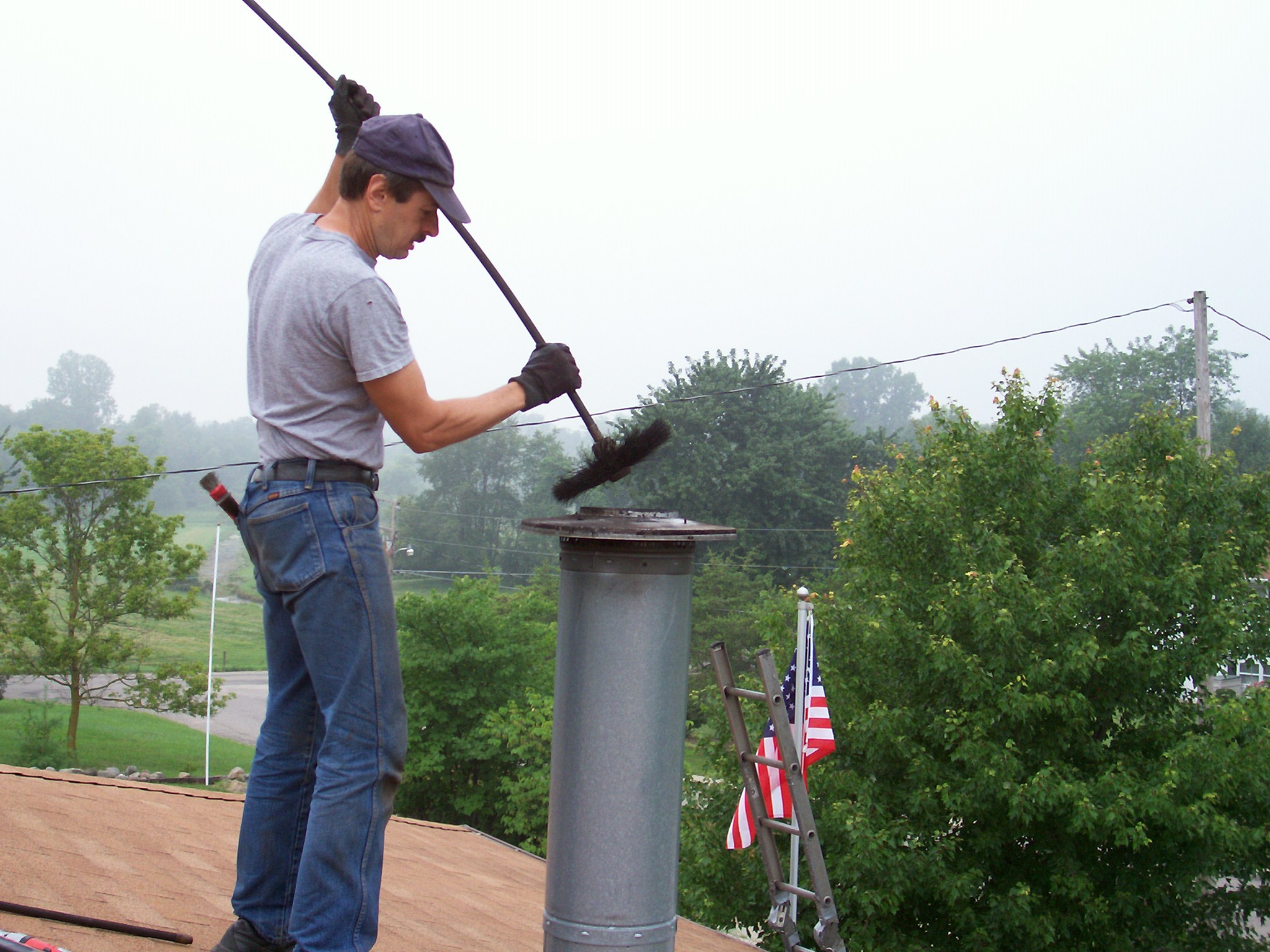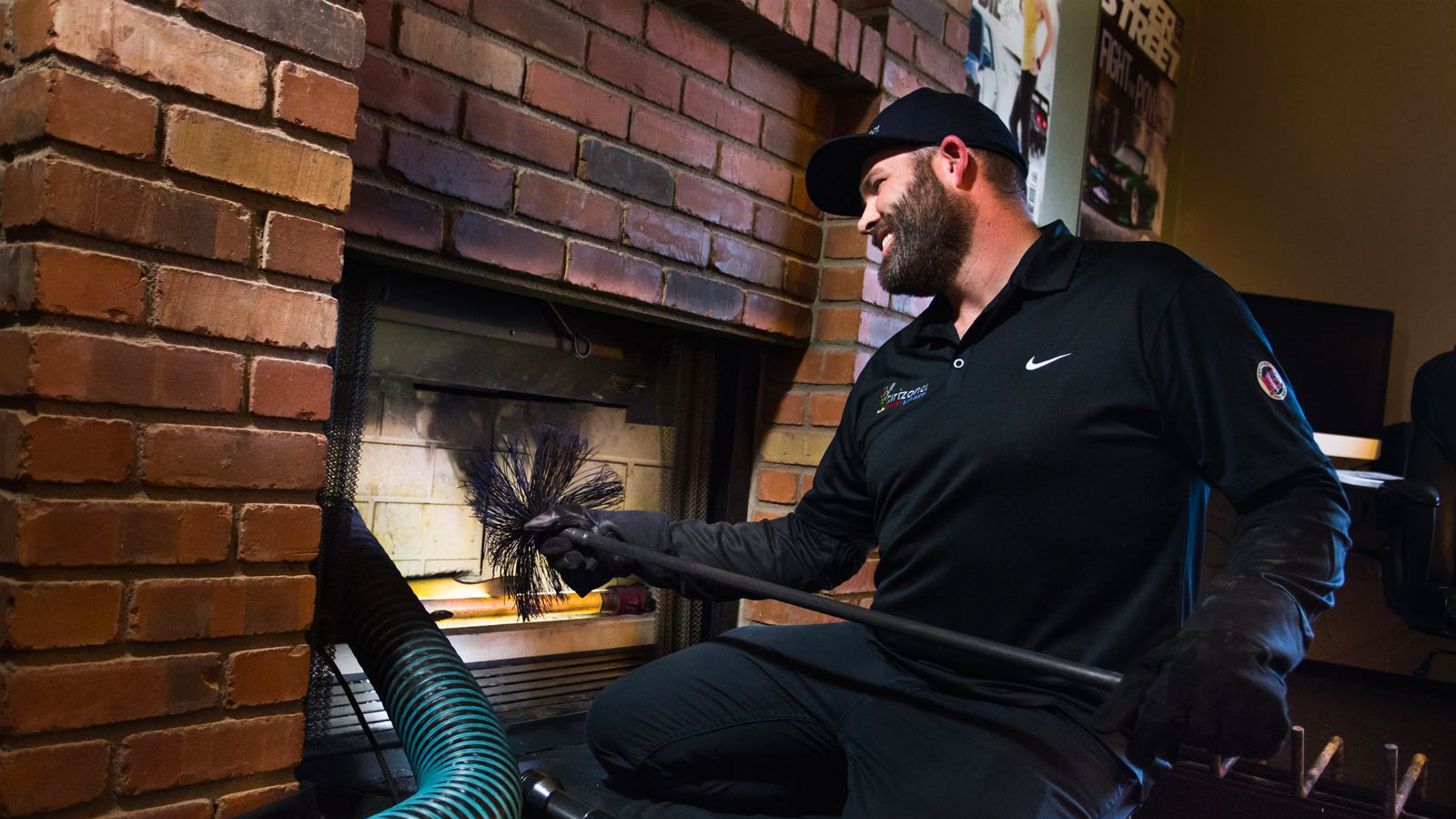Chimney Clean San Jose Solutions: Your Trusted Companion for a Safer Home
Chimney Clean San Jose Solutions: Your Trusted Companion for a Safer Home
Blog Article
Smokeshaft Cleaning: A Step-by-Step Guide to Keeping a Healthy Fire Place
Routine chimney cleaning is a necessary part of this maintenance regimen. By following these standards, you will certainly find out just how to gather the essential devices, do an aesthetic assessment, clear debris and build-up, move the smokeshaft, and finish the final actions for recurring maintenance.
Gathering the Needed Tools
To begin the procedure of chimney cleaning, the initial step is to gather all the needed tools. Having the right devices available guarantees a secure and reliable cleansing process. The important devices for smokeshaft cleaning include a smokeshaft brush, a ladder, decrease towels or plastic sheets, a flashlight, gloves, and a dirt mask.
The smokeshaft brush is the primary device used to get rid of residue and creosote build-up from the flue. It is very important to pick a brush that matches the shapes and size of your chimney. In addition, a durable ladder is required to access the chimney safely. Make sure the ladder is steady and put on a level surface area.
Ground cloth or plastic sheets are critical for securing the bordering area from dust and particles. They help contain the mess and make cleanup easier. A flashlight is essential for inspecting the smokeshaft's inside for any kind of signs of damages or obstructions. Gloves are essential to safeguard your hands from residue and other unsafe materials, while a dirt mask assists protect against the inhalation of debris.
Carrying Out a Visual Assessment

Using a flashlight, very carefully examine the interior wall surfaces of the chimney for any type of indicators of damage, such as fractures, loosened blocks, or mortar wear and tear. These concerns can endanger the chimney's structural integrity and present a significant security threat. Additionally, check for any indications of water damages, such as discoloration or efflorescence, as this can indicate a leaking smokeshaft cap or blinking.
Following, evaluate the smokeshaft flue for any kind of obstructions. Search for the existence of nesting materials, leaves, or debris that may have built up gradually (Chimney Clean San Jose). These obstructions can restrict airflow, enhance the risk of carbon monoxide accumulation, and impede the chimney's ability to successfully air vent smoke
Throughout the visual examination, pay very close attention to the chimney crown, which is the leading surface area that secures the chimney from moisture. Look for cracks or missing out on items in the crown, as these can enable water to enter the chimney and cause significant damages.
Clearing Up Particles and Accumulation
After completing the aesthetic assessment, the next action in chimney cleaning involves clearing particles and accumulation to make sure the appropriate performance of the fire place. Over time, debris such as leaves, branches, and pet nests can accumulate in the smokeshaft, obstructing the circulation of air and creating prospective fire threats.
To clear particles and build-up, it is essential to make use of the right tools and methods. A chimney brush, especially developed for this function, is made use of to eliminate loosened particles and creosote from the chimney wall surfaces. It is vital to choose a brush that matches the dimension of your chimney to make sure reliable cleansing. Before starting the cleansing process, see to it to cover the fire place opening to avoid particles from dropping right into original site the room.
To begin, place the brush right into the smokeshaft and relocate up and down, scrubbing the wall surfaces to dislodge any type of particles or creosote. Make use of a sweeping activity to guarantee thorough cleaning. It is advised to begin with the base and function your means up. As soon as the cleaning is complete, utilize a vacuum or a smokeshaft brush expansion to eliminate the dislodged debris from the fireplace.

Brushing Up the Chimney
The sweeping of the chimney is a crucial action in maintaining a healthy fireplace. Over time, residue, creosote, and other particles can accumulate in the view it now smokeshaft, blocking the circulation of air and possibly causing a hazardous build-up of combustible materials. Routine chimney sweeping not just makes certain correct air flow yet likewise stops the danger of chimney fires.
When it involves smokeshaft sweeping, it is extremely suggested to employ an expert chimney sweep. These specialists have the knowledge and tools necessary to securely and properly eliminate the gathered particles from your chimney. They will usually start by covering the fire place to protect against any type of soot or particles from entering your home. Using customized brushes and vacuum cleaner devices, they will after that clean up the smokeshaft inside out, making certain that all the build-up is extensively eliminated.
It is very important to keep in mind that the frequency of smokeshaft sweeping depends upon several aspects, such as the kind of gas made use of, the quantity of use, and the kind of chimney. As a general general rule, it is advised to have your chimney brushed up and examined a minimum of annually.
Last Actions and Maintenance
After completing the smokeshaft sweeping procedure, the first step in the final upkeep is to evaluate the smokeshaft cap and trigger arrestor. These elements protect against particles, pets, and rain from entering the chimney.

Inspect the within of the fireplace for any type of indicators of wear and tear, such as cracks, loosened blocks, or harmed mortar. These concerns can affect the structural honesty and safety of the fireplace. If any kind of troubles are found, consult a specialist smokeshaft sweep or mason to address them immediately.
Ultimately, take into consideration installing carbon monoxide detectors near the fireplace and throughout your home. These gadgets can find the visibility of this unsafe gas, giving a very early warning system in situation of a smokeshaft breakdown. Regularly check and replace the batteries in these detectors to ensure their effectiveness.
Verdict
In conclusion, following a step-by-step overview for smokeshaft cleansing is critical in keeping a healthy and balanced fireplace. By gathering the necessary devices, performing a visual assessment, getting rid of debris and build-up, and brushing up the smokeshaft, home owners can ensure the security and effectiveness of their fire place.
The vital tools for chimney cleaning include a smokeshaft brush, a ladder, drop cloths or plastic sheets, a flashlight, handwear covers, and a dirt mask.
A smokeshaft brush, especially made for this objective, is made use of to eliminate loosened particles and creosote from the chimney wall surfaces. Regular chimney brushing up not only makes sure correct ventilation however additionally protects against the risk of chimney fires.
When it comes to chimney sweeping, it is highly recommended to hire a professional smokeshaft sweep. After finishing the smokeshaft sweeping process, the very first step in the final upkeep is to examine the chimney cap and stimulate arrestor.
Report this page